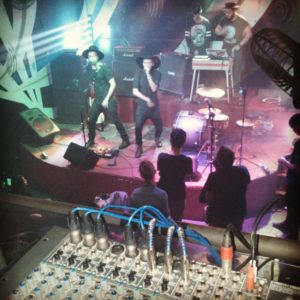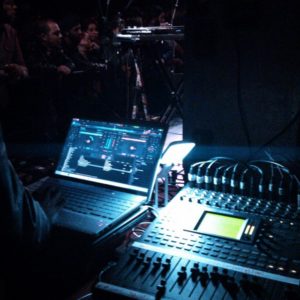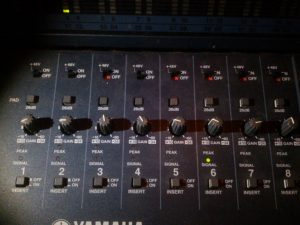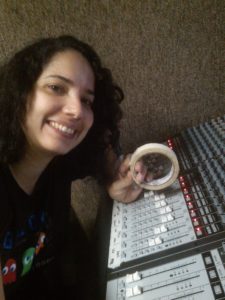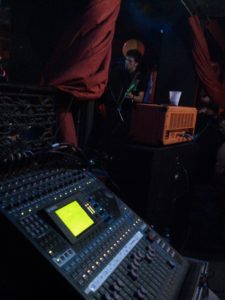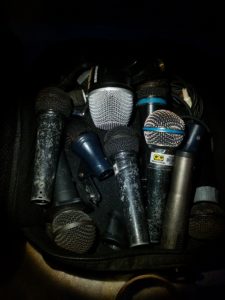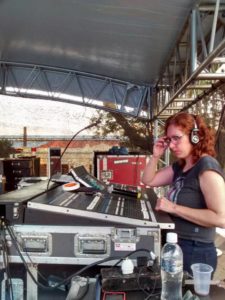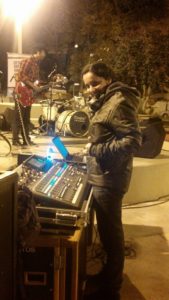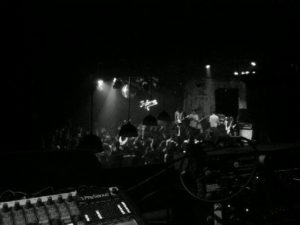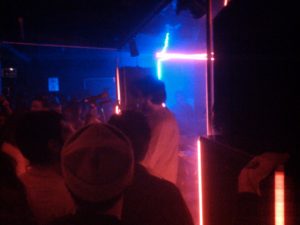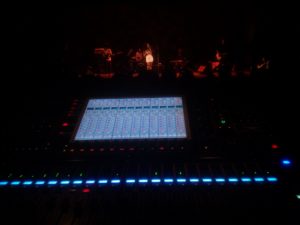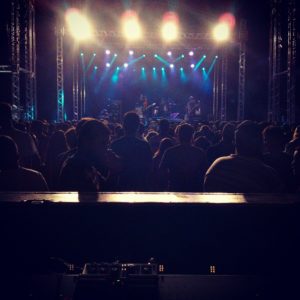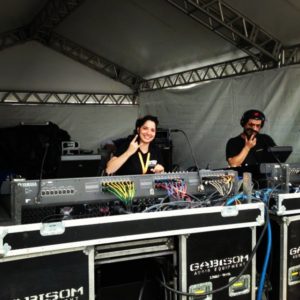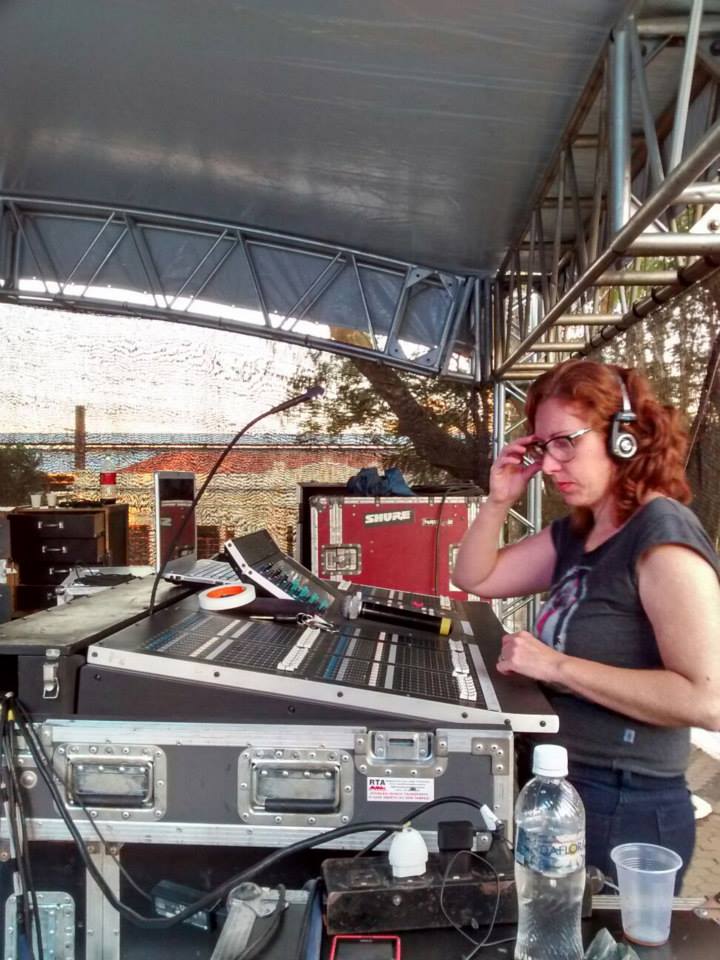
Rock n Roll in Brazil? Sure!
Brazil is a huge country, the largest in Latin America, and already has more than 200 million inhabitants. Discovered in 1500 by Portuguese colonizers, it is a country that has never stopped receiving immigrants; absorbing their cultures, and mixing with them. As a consequence, it has become one of the most multicultural countries on our beloved planet Earth. And this plurality reflects directly on all aspects of our culture and habits.
You may be wondering: So, do you have a Rock n Roll scene in Brazil? Yes, we do! And it’s new, vibrant, and far more interesting than you could imagine.
But first, let’s take a quick look at the influences of the past that have brought us to where we are today.
Samba & Nature:
I believe that in the imagination of those who don’t live in Brazil, or have not visited yet, the first things they think about are Samba and Nature.
We agree.
Certainly, our natural resources, fauna, and flora are extremely rich and impressive; indescribable landscapes that cater for all the tastes and types of experiences that anyone would want to have.
This extends to our culture. We are very rich musically, and it is not possible to speak of any other local musical style without talking about Samba. It was the first style genuinely developed here and gives rise to the many others that we have all over the country.
The presence of African slaves has been constant ever since the beginning of colonization, through the cultivation of sugar cane in 1500 to the later exploitation of gold (around 1700), where the indigenous people refused to work. From these African slaves and their musical heritage came the rhythmic basis of Samba and the other types of music that emerged after the abolition of slavery (in 1888). This combined with the influence of seventeenth-century European erudite music, which was also present in the major cities of Brazil during that period.
Bossa nova:
But the greatest Brazilian musical exponent, which opened the door to the world, was the Bossa Nova in the 1950’s. It is a derivative of Samba, with influences of Jazz, although slower and based on the acoustic guitar or piano (with added bass and drums), and is a simple form where sweet melodies are sung, whispered, and almost spoken.
Songs like “Girl from Ipanema” (“Garota de Ipanema”) are still re-recorded (more than 240 versions) and played, inside and outside the country.
MPB (Brazilian Popular Music):
In the early 1960s, with political issues, Bossa Nova being widely spread among universities and university students, and the additional influence of other musical styles from outside, audiences began to demand a more critical music, with mixtures of traditional styles, and a desire for this to become the characteristic style of the country.
This has indeed happened, and nowadays this acronym (MPB) is the most used to describe the kind of music made by the new artists that appear with the national ‘accent’.
At the same time a ‘Pandora’s Box’ was opened, bringing the richest and most diverse Samba mixes to other styles – such as Tropicalia (psychedelic rock), Samba-Rock (rockabilly and soul) and Jovem Guarda (British and American rock and pop).
What about Rock?
Since the 1950s, even on a small scale, this has always been present in Brazilian music, as it has practically all over the world, having a successful single here, another there, also enjoying the ‘fevers’ of Elvis Presley and Beatles, for example. The greatest boom in Brazil was in the 1980s, denominated BRock, that extended until the mid-1990s. Since the, while the style remains alive, present and mutating, it has all but left the mainstream (with some exceptions, of course) and survives largely due to the emergence of independent festivals that have proliferated from the north to the south of the country over the 1990s and 2000s, which remain to today. Also, due to internet diffusion, it has become more accessible over this period into the present day.
We usually say that the life of Rock n Roll in Brazil is a life of love. Much love.
The structures are very precarious, the concerts usually have more than one (or five, or ten) group(s) per night, the venues are the most under of the underground, and much adaptation and collaboration is needed among those involved.
- FOH and Monitors and a ‘nice’ view
- FOH and Monitors in almost in the bathroom
- Recall Safe
- Never forget your tape and pen!
It is very common to have to make the F.O.H. and monitor mixes from the same mixer, which will probably be located on stage or in a position where you can barely see or hear the band. It’s also common to deal with limited and damaged microphones and equipment, and to have to hear that “you don’t need microphone / channel in the amplifiers, because they already come from the stage”, fighting until you make yourself understood, and having the minimum quality to make a good mix . Or not. Sometimes it’s a lottery…
- FOH and Monitors in the same mixer, behind the speakers
- Nightmare mics
- FOH and Monitors in the same mixer, above the stage
But it is also a GREAT ‘school’ of sound, which makes you use all your skills and knowledge, and acquire new and never-before imagined skills that challenge many acoustic and physics theories. Just living to believe.
- FOH and Monitors cold and rain
- FOH and Monitors and an athlete’s breath
- Speakers behind the musicians
Another good thing is that, sometimes in the year, you have the ‘luck’ to participate in small and large festivals, or spaces prepared to receive concerts, where they spoil you and offer that beautiful minimal structure that we all deserve – its only joy!
- Piece
- of Cake
- FOH Lollapalooza
This strengthens and spreads more and more of the good old Rock n Roll, which in Brazil we find mixed with both national and folk styles, as well as being faithful to the originals, in some cases being sung in English.
What is important as a SoundGirl here is to keep in mind that we live this whole mix every day and that even if you want to direct and specialize in one style only, you’ll always have the opportunity to mix unusual instruments in the same job. This is what make the daily life of our profession here fun and intriguing.
Links for those who want to know a little more:
Donga: https://www.youtube.com/watch?v=woLpDB4jjDU
Cartola: https://www.youtube.com/watch?v=fUjOfsoBhMY
João Gilberto and Tom Jobim: https://www.youtube.com/watch?v=vuJhgDrx1Aw
Elis Regina: https://www.youtube.com/watch?v=J_LwGTdUImA
Os Mutantes: https://www.youtube.com/watch?v=7uSXJMqG6_o
Jorge Ben: https://www.youtube.com/watch?v=IPENGb-FG5E
Novos Baianos: https://www.youtube.com/watch?v=JlmmaqWrUUU
Secos & Molhados: https://www.youtube.com/watch?v=xpqbbmJ42yU
Paralamas do Sucesso: https://www.youtube.com/watch?v=7c5UrNqECjA
Raimundos: https://www.youtube.com/watch?v=Fvza_7TyHQ8
Pitty: https://www.youtube.com/watch?v=HxRlnQCZE1k
Vivendo do Ócio: https://www.youtube.com/watch?v=tmnpfaU6-YI&list=PLPUVvUKUHDpJ6O46c301DCr_JPXndKYnj
Far From Alaska: https://www.youtube.com/watch?v=aSwCPHN-RRg
 Roberta Siviero: SoundLover, SoundWorker, and SoundGirl with great pride, for the last 18 years. I am always interested in learning more about sound, specializing in live sound (F.O.H. and M.E., rental companies technician), but I also have experience in broadcast and post production. Everything that has ‘sound’ in the middle, I strive to learn. I am responsible for the projects Mulheres do Áudio (Women of Audio) and Terças Técnicas (Technical Tuesdays), always aiming for the union of the classes, diffusion of information, and knowledge related to sound, in Brazil and around the world. Half bossa nova, half rock n roll, cat lover, travel lover, and vegetarian too. Anyone who wants recipes or any information related to these subjects can send an e-mail to robertasiviero@gmail.com. I will be happy to hear from you!
Roberta Siviero: SoundLover, SoundWorker, and SoundGirl with great pride, for the last 18 years. I am always interested in learning more about sound, specializing in live sound (F.O.H. and M.E., rental companies technician), but I also have experience in broadcast and post production. Everything that has ‘sound’ in the middle, I strive to learn. I am responsible for the projects Mulheres do Áudio (Women of Audio) and Terças Técnicas (Technical Tuesdays), always aiming for the union of the classes, diffusion of information, and knowledge related to sound, in Brazil and around the world. Half bossa nova, half rock n roll, cat lover, travel lover, and vegetarian too. Anyone who wants recipes or any information related to these subjects can send an e-mail to robertasiviero@gmail.com. I will be happy to hear from you!
Mulheres do Áudio: https://www.facebook.com/MulheresDoAudio/?fref=ts
Terça Técnica – SP: https://www.facebook.com/Ter%C3%A7a-T%C3%A9cnica-SP-701089939995946/?fref=ts
